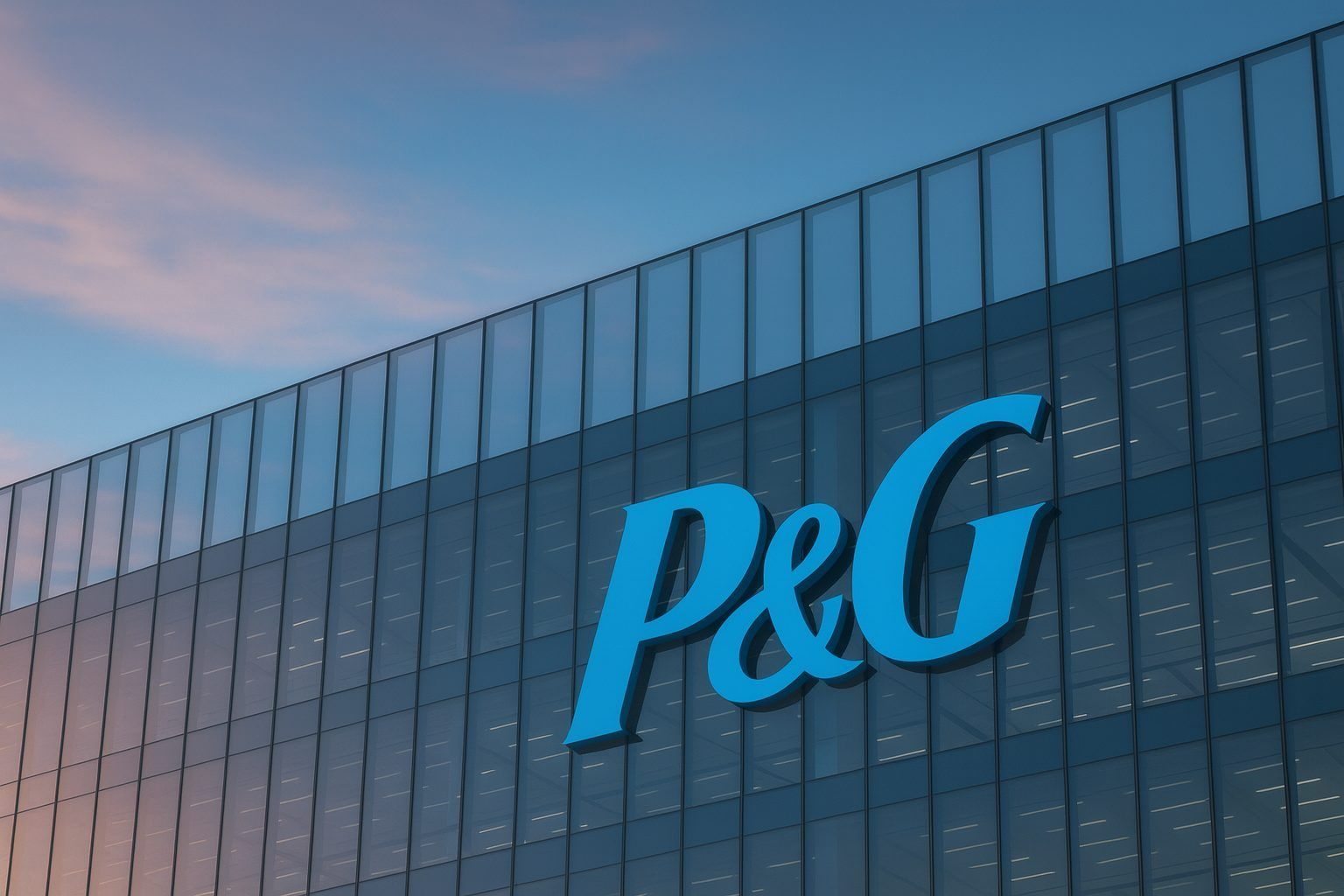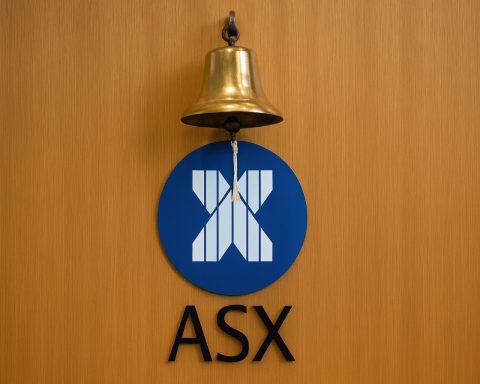As investors head into the trading session on Monday, November 24, 2025, Procter & Gamble (NYSE: PG) is back on many watchlists thanks to a strong earnings beat, resilient cash flows and its status as one of the market’s most reliable dividend payers.
At the latest close on Friday, November 21, PG shares finished at $150.92, up 1.84% on the day and about 16% below their 52‑week high of $180.43, leaving room for potential upside if sentiment toward defensive consumer staples continues to improve. [1]
Below is a detailed look at where the stock stands today, what’s driving the story after Procter & Gamble’s fiscal Q1 2026 results, and what investors may want to watch on November 24 and beyond.
PG stock price and valuation heading into November 24, 2025
Based on closing data from November 21, 2025: [2]
- Last close: $150.92
- After-hours quote (Nov 21): $151.00
- Market capitalization: about $352.7 billion
- Trailing EPS (ttm): $6.85
- Trailing P/E:22.0×
- Forward P/E: about 21.3×
- Dividend (ttm): $4.23 per share
- Dividend yield: roughly 2.8%
- 52-week range: $144.09 – $180.43
- Beta:0.38, reflecting PG’s typical low-volatility profile
At roughly 22× trailing earnings with a sub‑3% yield, the stock is priced as a high‑quality, defensive compounder rather than a bargain-bin value play. The current quote is:
- Only about 5% above the 52‑week low
- Roughly 16% below the 52‑week high
That positioning supports the idea that PG is still closer to the lower end of its recent trading range, even after the post‑earnings bounce. [3]
Earnings recap: what P&G’s latest quarter tells investors
On October 24, 2025, Procter & Gamble reported results for the first quarter of fiscal 2026 (covering the July–September period). The numbers confirmed that the consumer-staples giant continues to grow steadily despite a mixed macro backdrop: [4]
Headline results (Q1 FY 2026):
- Net sales: $22.4 billion, up 3% year over year
- Organic sales growth:+2%, driven by pricing and mix
- Diluted EPS:$1.95, up 21% versus the prior year
- Core EPS:$1.99, up 3% year over year
- Operating cash flow: $5.4 billion
- Adjusted free cash flow productivity: 102%
- Cash returned to shareholders: $3.8 billion
- $2.55 billion in dividends
- $1.25 billion in share repurchases
According to the company and independent coverage, P&G’s quarterly revenue and core EPS topped Wall Street estimates, benefiting from strong demand for beauty and hair-care products despite a broader slowdown in discretionary spending. [5]
Guidance and tariff outlook
Management reaffirmed full‑year fiscal 2026 guidance, which calls for: [6]
- All‑in sales growth: +1% to +5%
- Organic sales growth: flat to +4%
- Diluted EPS growth: +3% to +9% versus fiscal 2025
- Core EPS range:$6.83 to $7.09, midpoint $6.96 (about +2% vs. prior year core EPS of $6.83)
On the cost side, there was a notable positive update:
- P&G cut its estimate of annual tariff costs in half, to about $400 million after tax, largely due to Canada lifting retaliatory duties on U.S. goods. [7]
However, tariffs and restructuring still matter:
- The company now expects around $100 million after-tax in commodity cost headwinds and about $400 million after-tax in tariff-related costs for fiscal 2026.
- P&G also plans $1.5–$2.0 billion in before-tax restructuring charges over roughly two years as it exits certain lower-return businesses (such as laundry bar operations in India and the Philippines) and reduces about 7,000 non‑manufacturing roles. [8]
Operating margins dipped by about 50 basis points year over year in the quarter as the company increased investments to address tariff and consumer pressures, but margins remained above many key competitors and still exceeded analyst expectations. [9]
A classic “Dividend King”: income profile and shareholder returns
Income investors looking at PG today will find one of the most established dividend track records in the market.
At its October 14, 2025 annual meeting, P&G’s board declared a quarterly dividend of $1.0568 per share, payable November 17, 2025, to shareholders of record on October 24. [10]
In that announcement, the company highlighted that: [11]
- P&G has paid a dividend for 135 consecutive years (since incorporation in 1890).
- It has raised its dividend for 69 consecutive years, making it a textbook Dividend King.
With a current indicated annual payout of around $4.23 per share and a yield of about 2.8% at Friday’s close, PG offers a yield somewhat above the S&P 500’s but below many higher‑yielding sectors like utilities or REITs. [12]
For fiscal 2026, management expects to: [13]
- Pay around $10 billion in dividends, and
- Repurchase about $5 billion of stock
That’s roughly $15 billion in total capital returns on a market cap a bit over $350 billion — a meaningful shareholder yield when combined with modest underlying earnings growth.
Wall Street sentiment: “Moderate Buy” with mid-teens upside
Analysts remain generally constructive on Procter & Gamble as we head into November 24:
- StockAnalysis data show an average rating of “Buy” from 14 analysts, with a 12‑month price target of $174.43, implying about 15.6% upside from the recent $150.92 close. [14]
- MarketBeat reports a consensus “Moderate Buy” recommendation from 21 brokerages, with 12 Buy ratings and 9 Holds, and an average price target of roughly $171.53. [15]
- A separate survey cited by Barchart pegs the mean target around $169–170, also pointing to low‑to‑mid‑teens percentage upside. [16]
Taken together, Wall Street sees PG as a high‑quality defensive stock with moderate appreciation potential over the next year, rather than a deep-value contrarian opportunity. The upside case largely rests on:
- Continued low‑single‑digit organic sales growth,
- Modest EPS expansion helped by buybacks and productivity savings, and
- Ongoing demand for essential household and personal care brands.
That said, some valuation‑focused models argue that PG might already be fully valued or slightly overvalued. One narrative-driven analysis from Simply Wall St, for example, projects P&G’s revenue rising to about $92.8 billion and earnings to $17.8 billion by 2028 (roughly 3.3% annual revenue growth) and notes that certain fair-value estimates imply the stock could be around 19% above its intrinsic value. [17]
Brand and product momentum: recent launches keep the story fresh
Beyond the headline financials, P&G continues to refresh its brand portfolio — a key driver of pricing power and consumer loyalty. Recent examples include:
- Pantene’s “Abundant & Strong” collection, a three‑step system designed to reduce hair shedding and promote denser hair, powered by a Pro‑Vitamin complex with niacinamide and other antioxidant ingredients. The line is rolling out for the holiday season through Amazon and major U.S. retailers such as Walmart, Target, Walgreens and Meijer. [18]
- Pampers’ launch of the world’s smallest diaper, Swaddlers size “Preemie extra extra small” (Pxxs), targeting the unique needs of micro-preemies in Neonatal Intensive Care Units as highlighted on World Prematurity Day. [19]
These kinds of innovation-led launches support P&G’s strategy of premiumizing categories where customers are willing to pay more for performance, especially in beauty, grooming and baby care. That premiumization trend helped drive the latest earnings beat, particularly in beauty and grooming segments. [20]
Key risks and overhangs to watch today
Even with its blue-chip reputation, P&G isn’t risk‑free. Investors considering PG stock on November 24 should keep several issues on the radar:
1. Tariffs and geopolitical uncertainty
- P&G has reduced its estimated tariff cost headwind to about $400 million after tax for fiscal 2026 as Canada rolled back retaliatory tariffs, but that still represents a significant drag on profit. [21]
- Trade policy remains fluid. Reuters recently highlighted that U.S. tariff policy — including decisions to halt or reframe trade talks — could influence whether that tariff relief proves temporary or durable. [22]
If tariffs re‑escalate or spread to additional categories, P&G may need to lean even harder on pricing and productivity gains to protect margins, which can be challenging in a price-sensitive environment.
2. Consumer spending and competition
P&G’s CFO has described the consumer backdrop as “not great, but stable,” noting that both lower-income and higher-income customers are trading up or down in pack sizes to manage budgets. [23]
Risks here include:
- Category softness in laundry and baby care in parts of Europe and North America, where discounting and private-label competition have been intense. [24]
- A slower macro environment that could limit the company’s ability to push through further price increases without volume losses.
Despite these challenges, the Q1 numbers showed that P&G is still able to grow organic sales and maintain robust margins, but the room for error isn’t unlimited.
3. Legal and regulatory exposure
On November 3, 2025, a U.S. federal judge ruled that P&G must face a lawsuit alleging that packaging for Kid’s Crest toothpaste could mislead parents into using more fluoride than recommended for children. [25]
- Plaintiffs argue that the imagery and labeling suggest a full strip of toothpaste is appropriate, potentially clashing with health guidance that recommends only a smear or dab for young children.
- The case survived P&G’s motion to dismiss and is proceeding under state consumer protection laws, while the company also faces broader scrutiny around how children’s toothpastes and rinses are marketed. [26]
Although such lawsuits typically don’t alter the long‑term investment case by themselves, legal overhangs can create headline risk and modest financial exposure.
4. Restructuring execution
P&G’s multi‑year plan to exit certain businesses and cut thousands of non‑manufacturing roles is aimed at sharpening its focus and boosting long‑term productivity. But large restructuring programs bring risks: [27]
- Potential disruption to operations in affected markets
- Integration and execution risk as the company reallocates resources
- The possibility that savings take longer to materialize than planned
Investors will want to track future quarters for evidence that restructuring charges are translating into sustainably higher margins and not just one‑off cost noise.
How PG stock sets up for investors on November 24, 2025
Putting it all together, here’s how Procter & Gamble looks as of the start of the November 24 session, based on the latest available data (through the November 21 close):
Positives for PG today:
- Steady growth profile: Low‑single‑digit organic sales growth with resilient demand in beauty, grooming and key baby care categories. [28]
- Strong cash generation: Over 100% free cash flow productivity last quarter and a long history of converting earnings into cash. [29]
- Elite dividend track record: 69 consecutive years of dividend increases and 135 years of uninterrupted payments, with a current yield around 2.8%. [30]
- Defensive profile: A low beta around 0.38 positions PG as a relative safe haven during periods of market volatility. [31]
- Analyst support: Consensus ratings around Moderate Buy/Buy, with mid‑teens expected upside over the next 12 months. [32]
Key watchpoints and trade‑offs:
- Valuation isn’t cheap: Around 22× trailing and 21× forward earnings for a low-growth consumer staples name leaves limited multiple expansion potential unless investors rotate aggressively into defensives. [33]
- Tariff and cost headwinds: Even after the reduction, tariffs plus commodities are still forecast to shave roughly $0.19 per share from fiscal 2026 EPS. [34]
- Legal and regulatory noise: The Kid’s Crest packaging lawsuit and ongoing scrutiny in areas like dental products add a layer of headline risk. [35]
- DCF-based valuations: Some fundamental models suggest PG may trade above estimated fair value, implying less margin of safety for purely value‑oriented investors. [36]
Final thoughts
For today, November 24, 2025, Procter & Gamble enters the week as a classic defensive, dividend-focused blue chip:
- It offers stability, cash returns and brand strength, backed by a long track record of surviving and thriving across economic cycles.
- Short‑term catalysts include any new headlines on tariffs, consumer spending trends, or updates on its restructuring program, alongside broader market sentiment toward defensive sectors.
- The main investment debate isn’t about survival or balance-sheet risk — it’s about how much growth and yield you’re getting for a roughly 22× earnings multiple, and whether that trade‑off suits your own risk tolerance and time horizon.
As always, this overview is informational only and not personalized investment advice. Before buying or selling PG shares, consider your financial goals, risk appetite, and time frame, and check real‑time prices and news, as market conditions may have changed since the most recent close referenced here.
References
1. stockanalysis.com, 2. stockanalysis.com, 3. stockanalysis.com, 4. www.pginvestor.com, 5. www.pginvestor.com, 6. www.pginvestor.com, 7. www.reuters.com, 8. www.reuters.com, 9. www.reuters.com, 10. www.pginvestor.com, 11. www.pginvestor.com, 12. stockanalysis.com, 13. www.pginvestor.com, 14. stockanalysis.com, 15. www.marketbeat.com, 16. markets.financialcontent.com, 17. simplywall.st, 18. www.businesswire.com, 19. www.businesswire.com, 20. www.pginvestor.com, 21. www.pginvestor.com, 22. www.reuters.com, 23. www.reuters.com, 24. www.pginvestor.com, 25. www.reuters.com, 26. www.reuters.com, 27. www.reuters.com, 28. www.pginvestor.com, 29. www.pginvestor.com, 30. www.pginvestor.com, 31. stockanalysis.com, 32. stockanalysis.com, 33. stockanalysis.com, 34. www.pginvestor.com, 35. www.reuters.com, 36. simplywall.st







